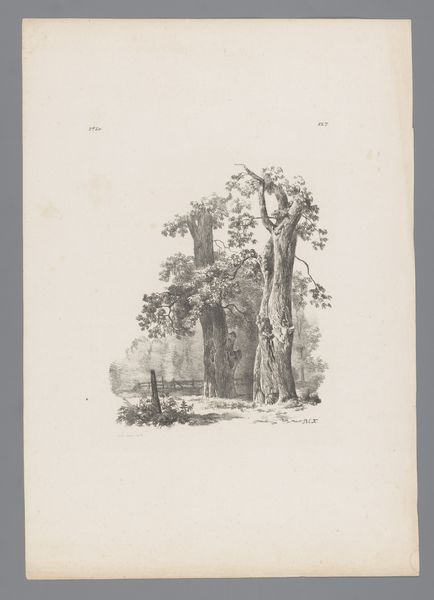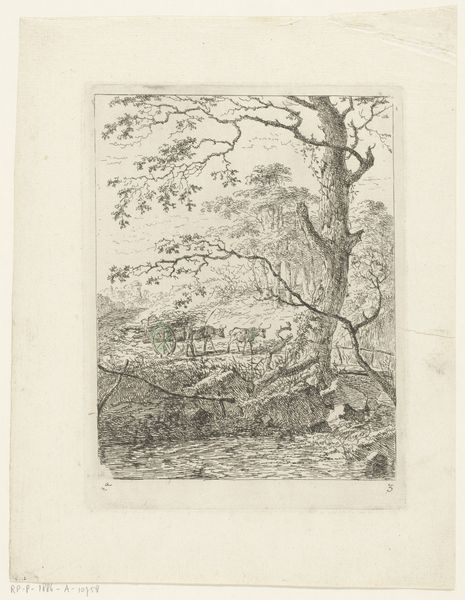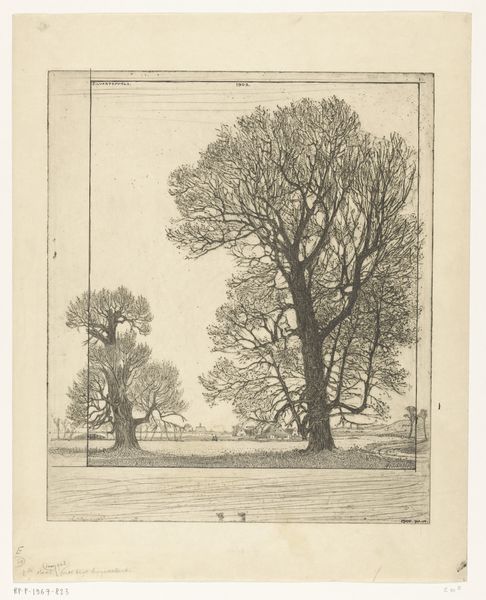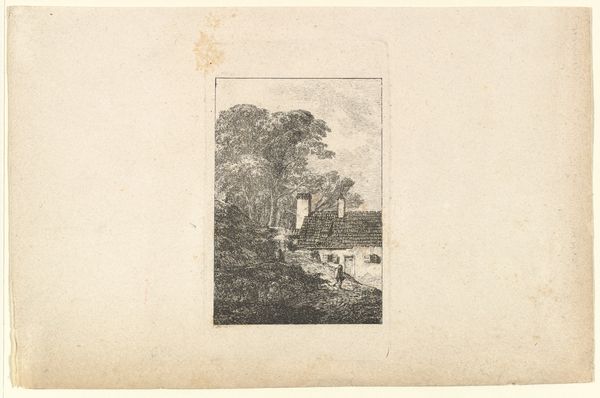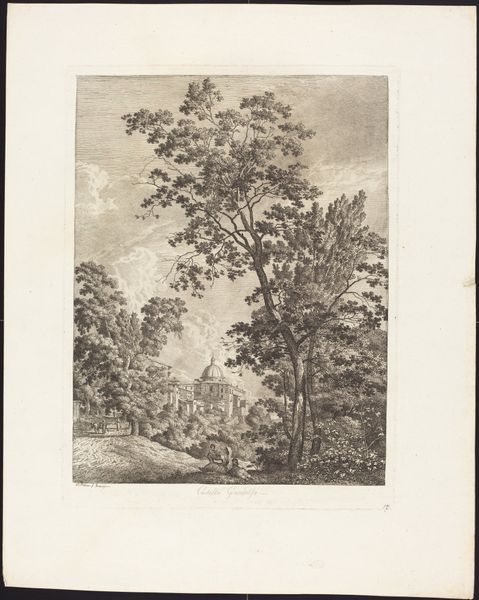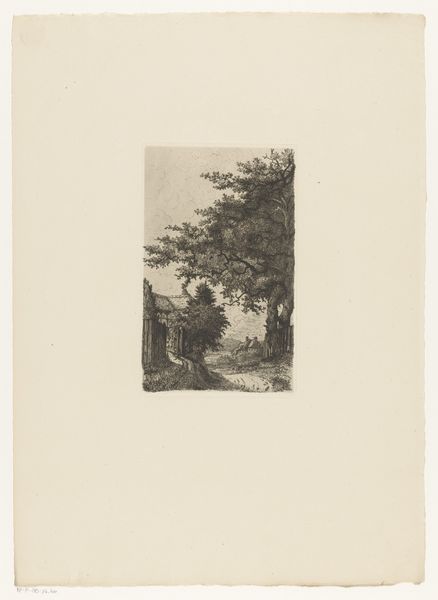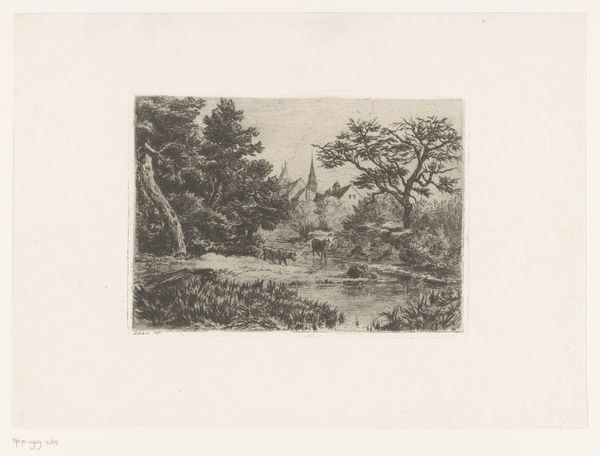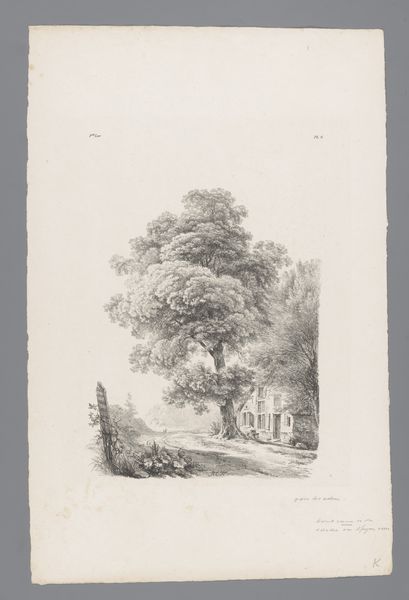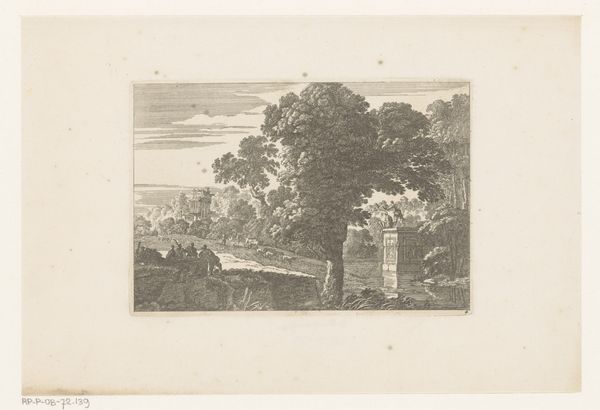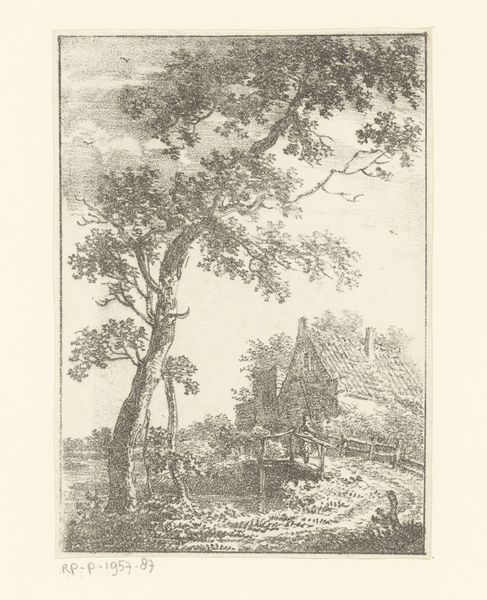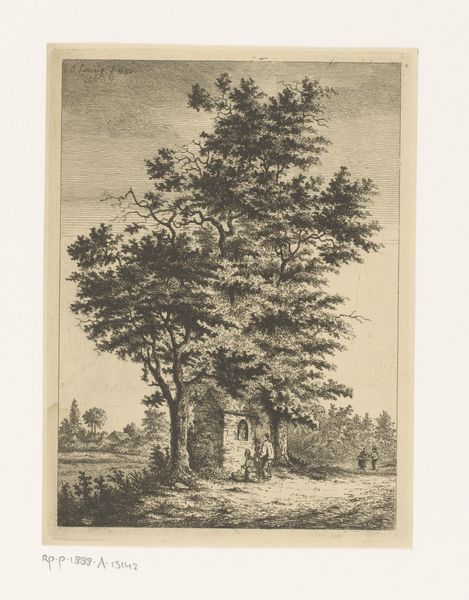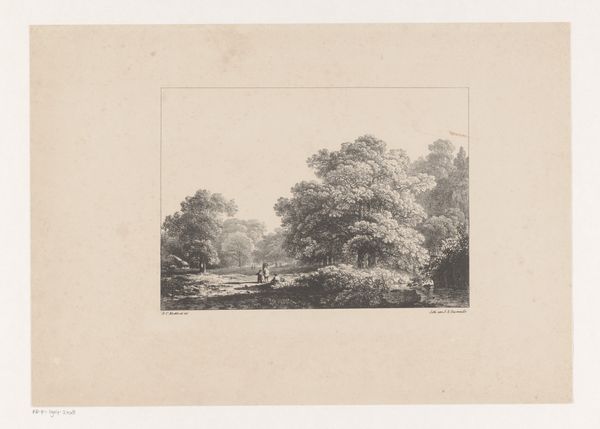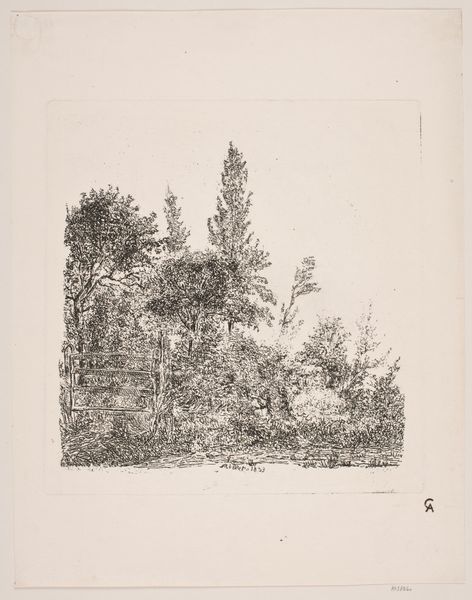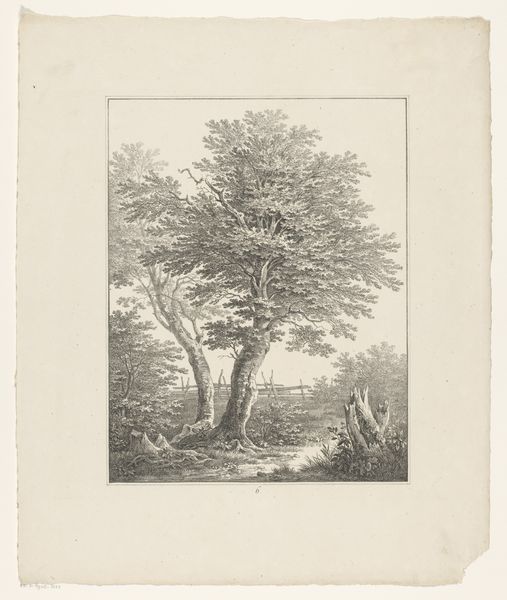
drawing, paper, ink
#
tree
#
drawing
#
landscape
#
paper
#
ink
#
realism
Dimensions: height 131 mm, width 84 mm
Copyright: Rijks Museum: Open Domain
Curator: We’re looking at “Boom naast een woning,” or “Tree next to a house,” a work on paper in ink by Isaac Weissenbruch, created sometime between 1836 and 1912. It resides here at the Rijksmuseum. Editor: My first thought is how the image is both comforting and subtly unsettling. There's a feeling of enclosure, perhaps even slight oppression from the looming tree and house. The linework creates a dense visual texture. Curator: Absolutely. Think of trees throughout history, often representing life and interconnectedness, or the natural world. But here, the imposing presence of the tree next to a building hints at nature's enduring claim even amidst human constructions. There's almost a tension. Editor: I’m interested in that tension, specifically in the contrast between the carefully delineated structure of the building and the more organic, almost chaotic rendering of the tree. See how the lines defining the house are relatively straight and controlled, while the branches and leaves are a wild tangle? The density and placement create a distinct visual rhythm. Curator: The bent trunk of the main tree serves a narrative purpose as well. A tree reaching for something it is far away, might symbolize longing or resilience? We see the evidence of seasons that brought sun, rain, and wind as it bends to thrive. Editor: Good point. The composition directs our eye diagonally, beginning with the sturdy foundation and inclining upward to meet the vast, indeterminate sky. Also, that specific shade of the sky reinforces the tonal variation to build depth and to direct the viewer to that upper area of the image. Curator: And those three birds in the sky above underscore this connection, and suggest aspirations of expansion and release to balance the feeling of confinement the other visual symbols suggest. Editor: Looking at Weissenbruch’s treatment of light and shadow, this work exemplifies his technical abilities to show gradations through mere linework and hatching. I appreciate it so much more by the second. Curator: So it is with symbols, and our evolving recognition of them and how they reflect enduring concerns across time. Editor: A concise breakdown that shows what is special and memorable about a seemingly simple artwork.
Comments
No comments
Be the first to comment and join the conversation on the ultimate creative platform.
